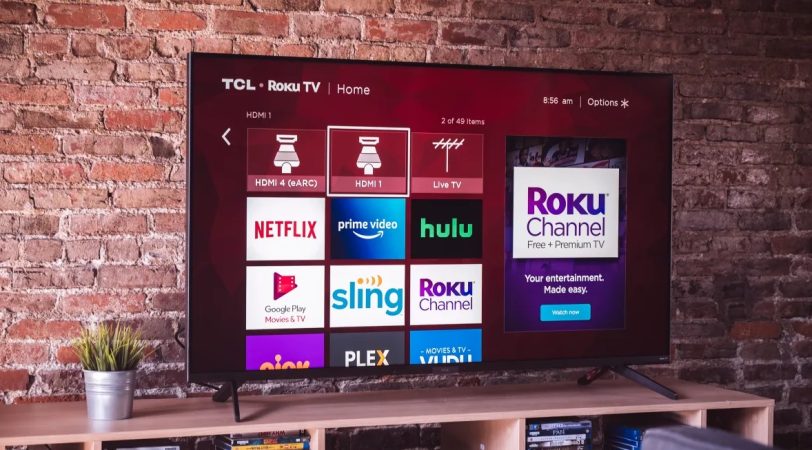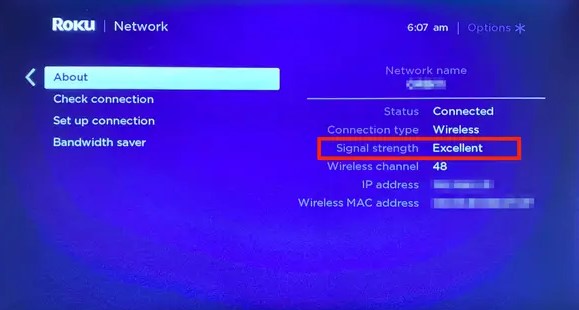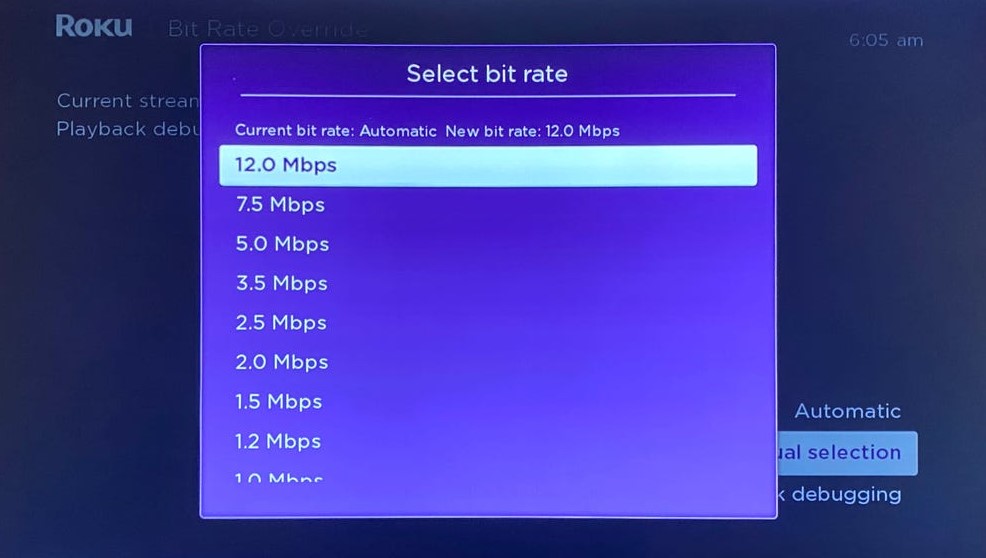
Roku devices function in a similar way to the Amazon Fire TV or Apple TV. They connect to your TV. You can search for streaming content from Netflix and other sources (subscriptions are required).
Besides, you can also access a lot of free content, including over 190 streaming channels on the Roku Channel as well as more than 250 channels through PlutoTV. In this article we look at ways to clear the cache on Roku, why your Roku device keeps on buffering, and why it would show not enough space.
How to clear your cache on Roku
Roku uses an operating system called Roku OS. So, first of all, you have to find out whether your problem is with the operating system or something else. We will look at different methods to clear the cache on a Roku player.
Method 1: Resetting Roku device
To clear the Roku’s cache you have reset your player by doing the following:
- Turn off and unplug your Roku device
- When using a Roku streaming stick, unplug its power cable from the TV and remove any other accessory attached to it
- Turn back on and wait for 30 seconds. (For a streaming player, turn it on and wait for at least 5 minutes)
- Attach the power cable back in and wait until you get a picture on your TV and your device should be reset
If after doing this, your problem wasn’t fixed then follow the next method.
Method 2: Clearing internet cache on Roku
You can also clear your internet browser’s (Chrome or Safari) cache and history. So, follow these steps to do that:
- Go to the ‘Settings’ option in your Roku player by pressing the home button on your Roku remote 3 consecutive times.
- Now go to the ‘System’ option and choose ‘Advanced system settings.
- Now choose ‘Networking’ option and then ‘Internet connection’
- Next select ‘Clear Cache’ (For Safari browser press ‘C’ button, for Chrome press ‘Shift+Ctrl+Delete buttons together).
Method 3: Uninstalling the troublesome channel
This is applicable only if your Roku player’s problem is with a particular channel. Follow these steps to uninstall that particular channel:
- Press the home button on your remote control 3 consecutive times when on the home screen.
- Now choose the ‘My Channels’ option.
- Press the ‘C’ button on your Roku’s remote for Chrome browser or Shift+Ctrl+Delete buttons together for Safari browser.
- Now select the channel using your Roku’s remote and press the ‘Option’ button on your Roku’s remote.
- A pop-up will appear, now choose the ‘Uninstall’ option to uninstall that channel.
Note: You can reinstall this particular channel from the Roku store later if you wish.
Method 4: Unplugging Roku device
Here are the steps to do that:
- Turn off your Roku by pressing its power button on your remote control for at least 5 seconds.
- Now unplug the power cable from your Roku player and wait for at least 30 seconds.
- Plug it back in, turn on your Roku device and restart the channel that was causing issues or launch any other channel to see if the issue is resolved now.
If none of these methods work then go to the Roku support website to find out whether you can reset your device there. If not, then go to Roku’s Setup Support page and follow the instructions there.
Why Does My Roku keep Buffering?

While Roku’s low price point has always been one of the biggest selling points, it’s also true that Roku has but a handful of issues that cord-cutters should be aware of. One such issue is the Roku buffering problem.
Why Do I Experience Buffering on My Roku?

When it comes to streaming devices, many things can go wrong. One such issue is perhaps the most frustrating one that a user can experience: buffering problems. We’ll discuss why they happen and what you might be able to do about them as well as explore some of the best solutions for this issue.
Roku Buffering Problems are Result from several factors
Factor 1: One reason that your Roku might be experiencing buffering problems is that the Roku device itself is not powerful enough to stream your desired content without such issues cropping up (for example, if you were to stream a high-quality live sports event).
Some models of Roku are more powerful than others and this issue might be resolved by choosing a better model. However, the problem here is that you do not know if your device is adequate for your desired needs or not without doing some research first.
Factor 2: Another reason that might be causing your Roku to experience buffering problems is that it is not properly connected. If you do not have a strong wireless connection then it will simply affect the quality of your streaming and, in turn, cause moments where it buffers or completely stops. The last thing that you want is to stream something of high quality because it will eat up your data and, in turn, cost you much more than you would expect.
If this is the case then simply using a different connection method might be enough to resolve the issue. If you’re streaming via Wi-Fi then make sure that there are no other wireless devices transmitting data and see if they make a difference (if you’re streaming via the internet, also make sure that your router is not overloaded). Other similar problems can be caused by using your phone or tablet – this is why we recommend using a computer to check the connection.
Factor 3: Finally, there are different types of Roku devices and one such issue might be the main culprit for your buffering problems. If you have an older Roku version then it might just not be powerful enough to handle the newest devices, especially if they are being streamed in HD quality. This is why we recommend checking with Roku’s customer service before upgrading or simply choosing a more capable unit.
How to Fix Buffering Problems with a Roku device?
Buffering concerns can occur when dealing with a Roku streaming device. However, not all of them will work on your particular device – some might have nothing to do with the actual cause and only provide a partial solution.
So, it’s important to understand what you’re dealing with before making any attempts.
One of the things that you should try is rebooting your Roku device. By rebooting, you avoid all of the problems and, at least theoretically, this should resolve your issue in a few minutes.
If that doesn’t work then you can try some advanced solutions that include:
- Updating the Roku device’s firmware
- Updating your computer’s drivers
- Changing the device settings on Roku (Factory reset)
- Using a different internet connection for streaming (Wi-Fi router, Powerline adaptor, etc.)
- Downloading some extra features and apps on your device (Plex Media Server)
As said previously, some of these options might work better than others (for example, using a powerline adaptor is good for improving your wifi internet but will not fix the problem if your device is faulty). Use them one by one until you find the perfect solution for you.
Solution 1: Update Roku device
The last thing that we want to mention here is the fact that a lot of users reported that updating their Roku device’s firmware was enough to fix the problem.
- To do this, you’ll need a USB flash drive and a computer
- Simply download the latest version from Roku’s official website and transfer it to your computer.
- Transfer it to your flash drive and insert it into your device as well.
- Finally, go through the setup process but before it starts streaming the audio/video content, press the Home button on your Roku remote.
- This will open up a window where you can access your device’s settings – enter here and look for an option that says Firmware Upgrade.
- Press it to start updating your device’s firmware (if there are multiple options then choose the one that’s the newest).
Solution 2: Using a Good VPN Service Provider
Sometimes buffering can also be caused by traffic throttling. This usually happens when you’re trying to stream video content online – often the ISP from where you’re accessing the internet might be slowing your available bandwidth down. Therefore, it’s important to consider the fact that this might also cause buffering problems.
The solution is simple – use a VPN service provider. What this does is encrypt the traffic coming out of your device which makes it nearly impossible for any ISP to see what you’re doing online. This means that they can’t throttle your speed or limit your bandwidth – but it also means that they won’t be able to block whatever content you want to access (including live TV and movies).
Here are a few of our recommendations: ExpressVPN – this VPN service is incredibly fast and easy to use. It’s also compatible with all of your devices so you can use it on your Roku. Cyberghost – offers the same services as ExpressVPN (including live TV and other types of content).
If you want peace of mind when streaming content online, then VPN providers are the way to go. They encrypt your traffic so ISP’s can’t throttle it and they allow you to access any content that you want in real-time. It’s an easy and effective solution to a common problem.
Solution 3: Using a Different Content Server
Sometimes, when trying to watch movies or listen to music on your Roku, there might be some buffering issues. This isn’t because of the device or even your internet connection – instead, it’s likely because the content that you’re trying to play is coming from a slow or overloaded server. This can cause a lot of issues and even lead to interruptions in the playback. To fix this problem, you’ll need to find another server where the same content is being hosted.
Let’s say for example that you’re trying to listen to a song but the playback keeps getting interrupted. To fix this, simply find another source where you can play it (instead of the one that’s currently streaming). This makes it one less server for Roku to connect to which means that it won’t be experiencing any troubles with content buffering and not enough space issues will be diminished.
Conclusion
We hope this article was comprehensive enough to address some of the issues you may encounter with your Roku system. In some instances, multiple solutions are offered and it is up to you to pick the best option for your device.

Denis is an article/blog and content writer with over 7 years of experience in writing on content on different niches, including product reviews, buyer’s guide, health, travel, fitness, technology, tourism. I also have enough experience in SEO writing.










![How to Watch UFC 303 Live Stream Free [Updated 2024] UFC 259 Live Stream Free](https://techsmartest.com/wp-content/uploads/2022/03/UFC-259-Live-Stream-Free-100x70.jpg)
![How to Access UFC 302 Live Stream Free [Updated 2024] UFC 260 Live Stream Free](https://techsmartest.com/wp-content/uploads/2022/03/UFC-260-Live-Stream-Free-100x70.jpg)




